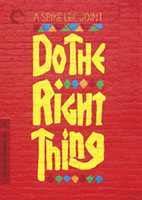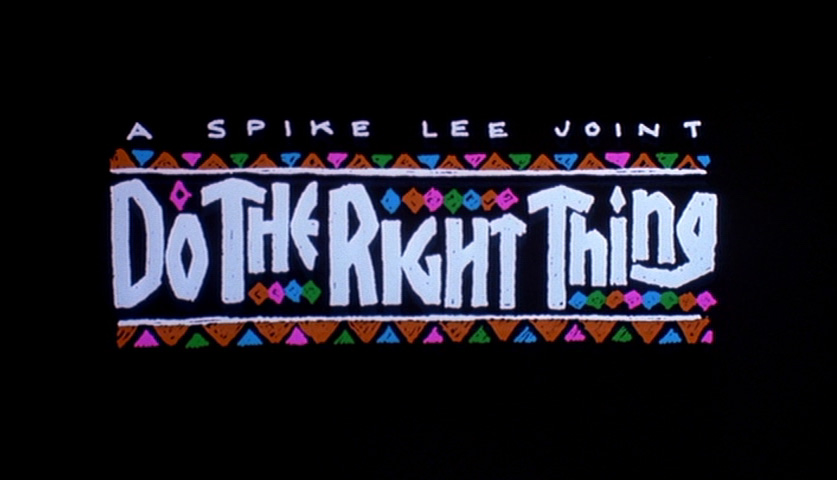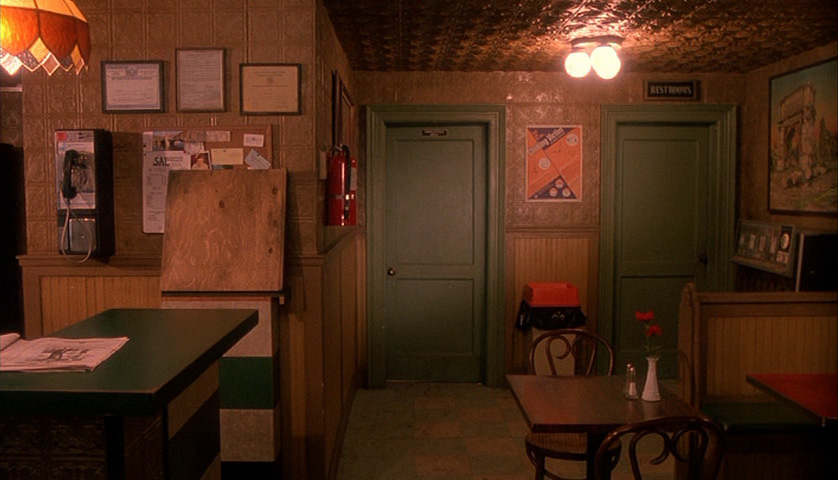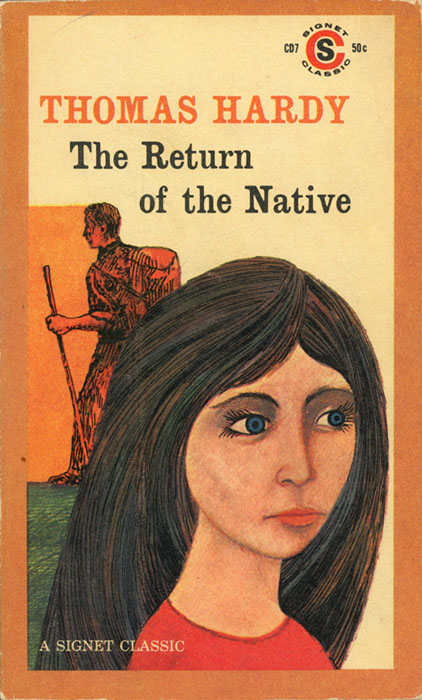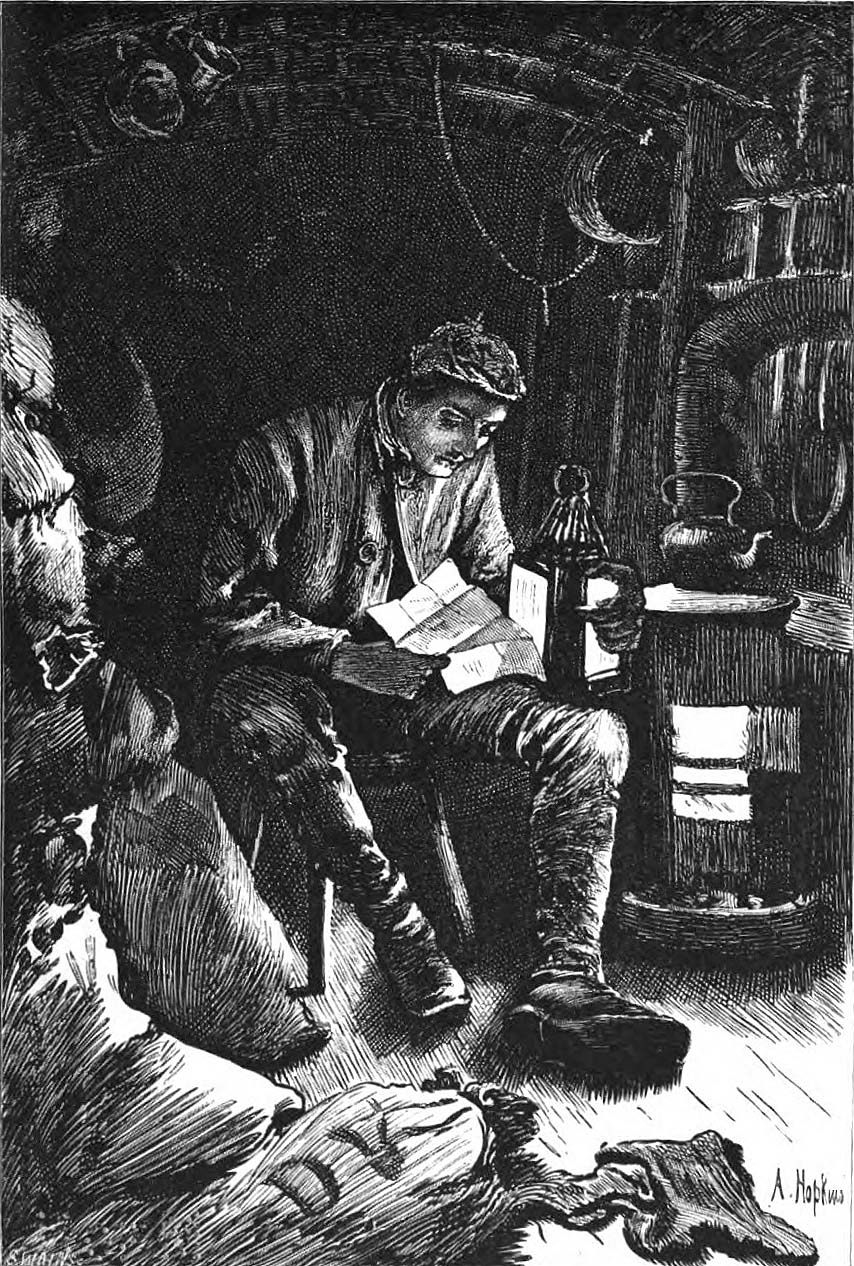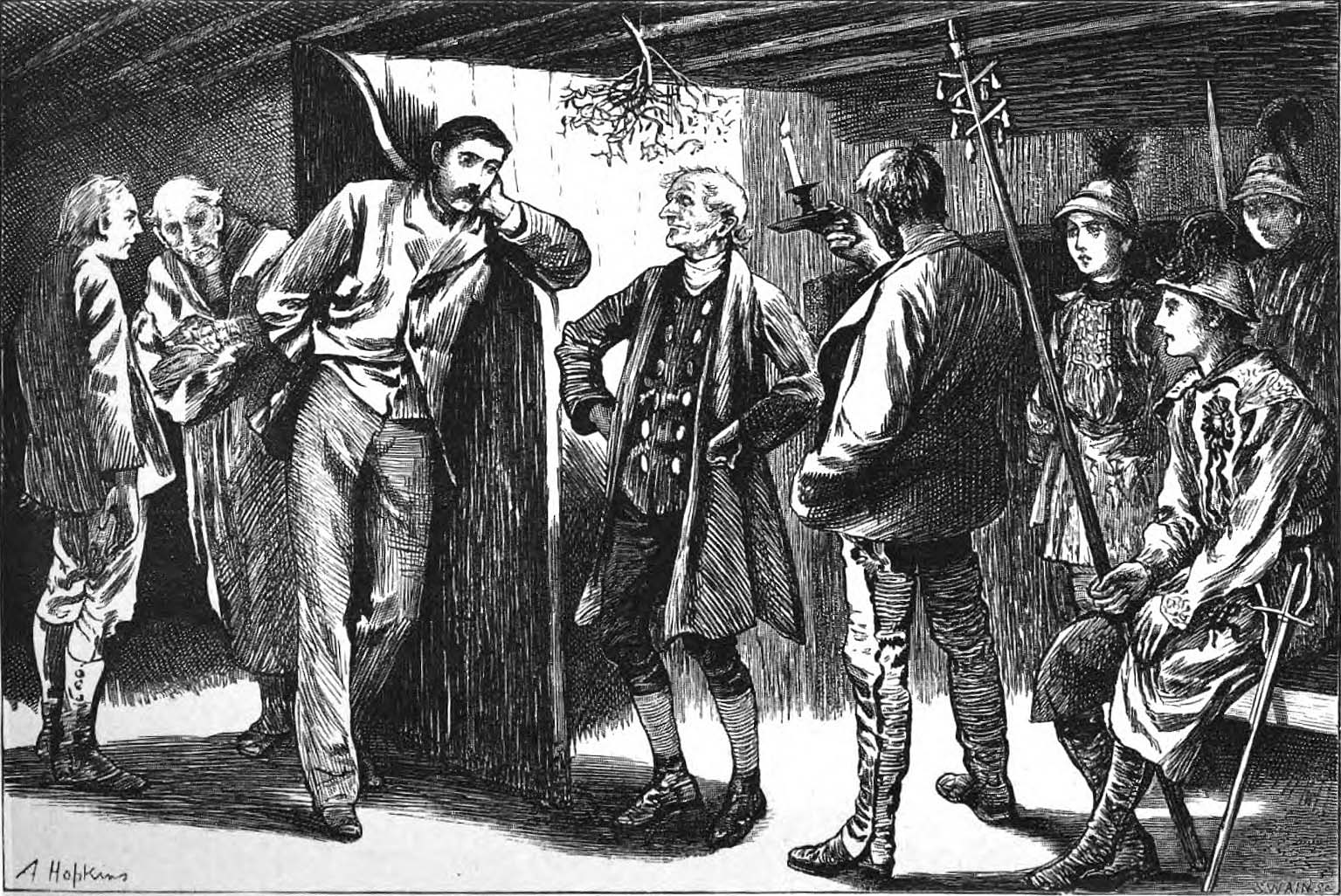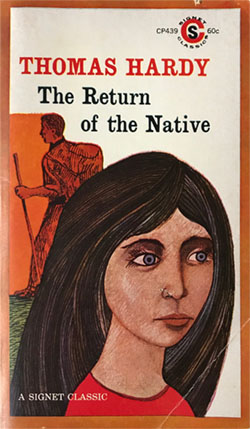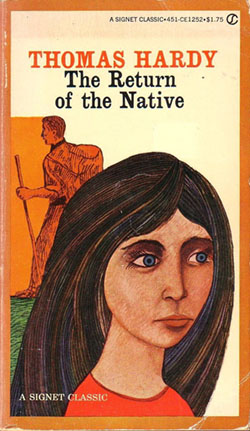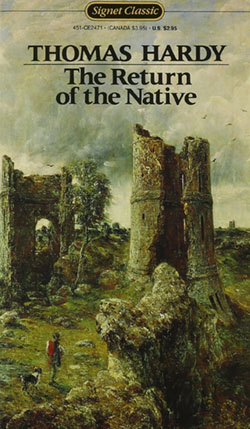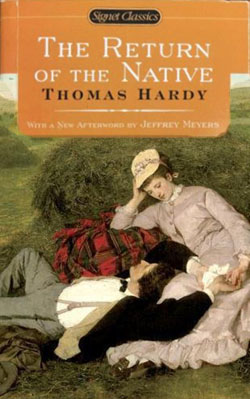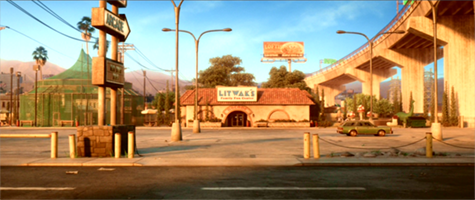
ADAM I don’t quite know what to say. It had something of everything. The first third just felt like “what is going on??”
BETH Yeah.
BROOM That never stopped for me. That’s how I felt the whole time.
ADAM Well, in the second half it was like “okay, we’re on a quest. I got it.” It settled into a quest, but it had that Moana thing of “but the quest is healing nature.”
BROOM Was it?
ADAM I mean, right?
BROOM I don’t know!
BETH It was about making friends with nature, I thought.
BROOM Did it represent nature as a whole or just one magical place? Those were the elemental spirits for the whole world?
ADAM They represented earth, water, air, and fire.
BROOM I got that.
ADAM Well, who can say if there’s any other non-Nordic realm in this world.
BETH I thought it looked beautiful. I really enjoyed looking at the diaphanous dresses, the way that everything flowed off of their bodies. I liked the costumes in general. Those are the things I was taking pleasure in because I felt like the story was just, like, “all right… okay…”
ADAM Well, I will say that even when it was strange and incomprehensible and distasteful, I never felt actively embarrassed like I did in Ralph Breaks the Internet.
BETH Yeah, it was classy.
BROOM Yeah, I never want to see Ralph Breaks the Internet again, and I would watch this with some curiosity if it came on again, because it was so strange. And full of beautiful things to look at.
ADAM Even the funny interludes were actually funny. Well, okay, at least I thought that Kristoff’s power ballad was funny.
BETH That was funny!
BROOM I found it so strange, because: who are they to make fun of this?
ADAM It definitely felt like the part where I’d stop paying attention if I were a kid.
BROOM I just couldn’t believe they, Disney, were making fun of a thing that’s only a couple of molecules away from Disney. When it started, when he stood against the tree with the backlighting and then they superimposed the close-up of his face, I spent that whole shot being like “is this parody or not?”
BETH I knew it was parody as soon as I heard the guitar.
BROOM I thought that was probably why that guitar was there, but… you know, either I’m taking this stuff seriously because it’s all stuff that Disney totally does, or I’m not because they’re making fun of it, and I couldn’t tell! And I thought that was remarkable.
ADAM I thought it was making fun of an 80s music video, not of Disney movies.
BROOM I got that eventually. But then at the end, Weezer sang that song, and they were reinterpreting it just like it had been any other song in the show. Because if it hadn’t had that guitar it would have sounded like any other song in the show! The idea that a song in a Disney musical would make fun of “cheesy songs” is so strange to me.
ADAM But again, if you compare it to the embarrassing “funny interlude” in Ralph Breaks the Internet, with the princesses, it was so much better than that! Nothing in here made my skin crawl. Which is some kind of accomplishment. By the second half, weren’t you like “all right, I at least see where we’re going here”? I agree that in the first twenty minutes, I was like “I don’t have any idea where this is going or what’s going on.”
BROOM The beginning of the movie piled on the songs so heavy. The songs were all…
BETH Same-y and boring!
BROOM I thought they were okay as songs…
BETH I didn’t think they were great.
BROOM … but they were all kind of out of narrative time. There was a song about “everything will always stay the same,” and I didn’t understand what the thing was that was supposed to stay the same. I mean, I knew they were setting me up for an emphasis on change later in the story… and then at the end they said that was what had happened, although…
ADAM In fact nothing changed! It seemed like everything was going to change, but then whoops! even Arendelle is fine. I guess the change is that Elsa moved.
BROOM And she moved because… there’s the magic people and the earthly people, and she had to go be queen of the magic people?
ADAM Yeah.
BETH It’s where she belonged.
BROOM Because she was actually the fifth element?
ADAM Yeah.
BROOM So the elements are air, fire, water, earth, and Elsa from Frozen?
ADAM I mean, maybe she’s ice? Maybe?
BROOM But the water horse turned to an ice horse.
ADAM Yeah. But she can also quench the fire lizard? I don’t know.
BROOM The fire lizard is only aflame when it’s upset. Otherwise it’s just a lizard.
ADAM It doesn’t even like to be on fire!
BROOM And the water horse was an angry “I want to drown you” water horse until… ?
ADAM Until she tamed it.
BETH I thought that scene was very cool!
ADAM It was very attractive!
BETH And powerful.
ADAM And scary.
BROOM Yup. And I thought it had a very good score. I thought the music was really well done. It was better than usual for movies like this.
ADAM The giants were the earth — why were there like ten of them?
BROOM And the air was not an animal, it was just “Gale” and she was the wind. Because they thought it was funny to give some air a name.
ADAM Yes. Well, it was air that rustled some leaves.
BETH You thought the songs were good?
BROOM I mean, I thought they were okay. There were some moments, like in the main one…
BETH What’s the main one?
BROOM “Into the Unknown.” Don’t you think that was the main one?
BETH Yeah, that was the climactic song.
BROOM Which they sang about six minutes into the movie! “This is the ‘Let It Go’ from this movie, and they sang it already?” I still felt like we weren’t…
BETH We hadn’t earned it.
BROOM We weren’t in narrative time, yet! It had all been like “this is a theme” and “this is a dynamic” but I was waiting for someone to just walk across a room in real time because a story was happening right now.
ADAM Wasn’t Elsa afraid to use her powers in front of other people, as a child? Why was she just creating snow people? At first I thought “are these Elsa’s children?” She doesn’t use her powers when she’s a child, right?
BETH Oh, good point.
BROOM She didn’t show her parents?
ADAM She did, they were watching her!
BROOM I mean in the first movie.
BETH I don’t remember.
ADAM I don’t remember either.
BROOM I only saw it the once.
ADAM But I thought that was the whole point, that she was afraid… or was it that she did use her powers, but she accidentally froze Anna or something?
BETH I think that’s what it was.
BROOM That first movie seemed to tap into some real felt experiences about self-doubt.
ADAM Yeah that felt like a real organic metaphor for something, and this one was just…
BETH “We have to make another one, so what can we do? Their parents died, so they need to figure out why, or something.”
BROOM There should be a name for the process when…
ADAM When they come up with a central argument and then they have to craft a story around it? “Ohana means family, and family means no one gets left behind.” That was actually one of the more successful ones, oddly.
BROOM I thought that one was fine. But what was the central argument here? I don’t think this was one of those.
ADAM But they clearly thought it should have that.
BROOM Even in Ralph Wrecks the Internet, we could see that the artificial concept was “if you love your friend, give them the freedom to pursue their dreams.” “If you love it, let it go.” Got it. What was the message of this? What was it about? What was going on?
ADAM I don’t think that was well executed. Sometimes they seem really artificial when they have a themed spine to them. But I agree with you, this didn’t have that, and as a result it was very confusing to follow.
BROOM The big revelation was that the voice that she’s been hearing… is her own?
ADAM Then there was “I’ve got to do it by myself.” “You’ll go too far!” What?
BETH But then it’s about Anna finding the magic inside her.
BROOM Was there magic?
BETH You know, metaphorical magic.
ADAM Logic.
BROOM Didn’t she already do that in the first movie? In fact doesn’t she say something here like “I climbed an ice mountain for you!” She already knows she’s a hero.
ADAM Yeah, I don’t know. Olaf was less embarrassing in this movie.
BETH I agree.
BROOM I don’t remember how embarrassing he was in the first movie, but I did think “boy, this is a lot of Olaf.” When he sang that song that was like “this is normal!” while scary things are happening, we hadn’t actually seen any scary things until he started singing the song, so… I don’t know, I felt like I was being forcefed a lot of Olaf time. But I also thought it was all beautiful, and had a lot of graphic force. It ended up feeling like a dream. I’m sleepy, so maybe that’s why, but I felt like I was having a dream. Like, “okay, I get that at a general level we’ve gone from a secure situation to an insecure one, and somehow this forest has to do with the insecurity, and that’s all I can understand.” And that’s how dreams are. Disney movies are usually so clear to me, so it was strange to be that disoriented.
ADAM I agree, I was very disoriented at the beginning. I don’t think I’m going to remember anything about this.
BROOM You were talking earlier about how you read stories to your boyfriend to put him to sleep… I was thinking that this seemed like something designed to put you to sleep, because every link in the story is a confusing one. That’s what makes my attention detach. Several times I felt myself thinking “uh-oh I guess I need to check back in, because they just told me things that don’t follow sensibly.”
ADAM But then there was the really literal and cloddish Kristoff B-plot about trying to propose.
BROOM That was like the B-plot from an episode of Friends, as you should know. That’s really the oldest B-plot in the book. “What was that you were going to say before we got interrupted? / Uh… nothing…” That’s like a number four.
BETH “Wait, we’re going to die??” “Not today!”
BROOM Well, I thought some of that dialogue was okay.
ADAM But it came from a weird different movie. And all the sister stuff felt like it was added after the fact to make it, like…
BETH Poignant.
ADAM Because that was a big selling point of the original Frozen, so that had to get touched up. Did like ten people write this? Maybe that was the problem.
BROOM No, I think Jennifer Lee wrote it. Script by Jennifer Lee and a couple other people, story by Jennifer Lee, directed by Jennifer Lee. Jennifer Lee is now the creative director of Disney Animation. After John Lasseter was pushed out for hugging too many people, she is now in charge of everything. I was just reading about her: she graduated from an MFA program in 2006 or something, and then got hired to be a helper on writing Frozen or one of those, and now she’s the head of the studio. And she also wrote the Wrinkle In Time adaptation that I believe was considered to be incoherent and tonally bizarre.
BETH I saw it. It wasn’t great.
BROOM I felt like Frozen came from a real place, whereas this was… I don’t watch enough anime to understand this kind of plot. So many layers of magic! The spirit, and then the spirit of the spirit, and then I’m the spirit…
ADAM I was sure the parents were gonna get brought back to life.
BETH Me too! I fully expected that, when the boat was discovered, with the map, and…
BROOM What was that whole thing about? “They told us our parents died on the South Sea but this is the North Sea so they must have been searching for me…”
ADAM Yeah, nothing happened with the map. Well, I guess the map is what tells you where the place is…
BETH Yeah, “go north,” but they already knew that.
ADAM What’s the place called?
BROOM It must be something from real mythology. “Ahana-what now?”
BETH I can’t remember.
ADAM It creeped me out when I realized that the magic people were natives of some kind, and not just other people. As soon as I saw “oh they have a slightly different skin tone,” I was like [sound of being uncomfortable].
BETH And then there was the song.
BROOM Well, what were they supposed to do? They were a different tribe.
BETH It just seems very Disney to handle it this way.
ADAM It seems very Brother Bear.
BROOM I assumed it must be modeled on some Scandinavian tribe…
ADAM They’re the Sámi people, right?
BETH Yeah, that’s what it said in the credits.
BROOM All right.
ADAM But ugh, that’s creepy. It made it suddenly like “what is this about? Is this about reparations?”
BROOM Well, what is it about? They built a false dam to drain their land of vitality?
ADAM I should have known that dam was suspicious! Dams are not in favor right now.
BROOM “It was a wonderful land where the spirits joined with the people… so we built them a dam.” I thought it was strange, but I didn’t think to be suspicious that it was a Trojan-horse dam. It didn’t make enough sense!
ADAM I also could have sworn that it was going to be some sort of misunderstanding between the peoples — not that their grandfather was a genocidaire.
BETH Yeah. So what does that mean?
ADAM It means that all of Arendelle was built on a lie.
BETH Right. So it is about reparations.
ADAM Or something! Who knows?
BROOM Seriously, did you guys not find this the most bewildering one, of all fifty-whatever?
ADAM It felt like I was having trouble gripping it in my mind as it was going through.
BROOM Yeah, exactly, that’s what I mean about the sleepy-time story.
BETH I was really just admiring the animation.
ADAM Which was beautiful, which was lovely.
BETH Even the skin texture, the way they moved. Everything was just beautiful. And not creepy — especially after seeing all those previews with bad CGI.
BROOM Some of them looked better than others. One of them you praised similarly — which one was it?
BETH Oh yeah, the Pixar one. That looked gorgeous. Anyway, I just stopped paying attention to the story. Well, I didn’t stop paying attention, but I stopped trying to figure it out.
ADAM Moana was very similar to this, tonally, but was a much more coherent execution of this thing. Did Lin-Manuel Miranda write that, or did he just write the songs?
BROOM He just wrote the songs.
ADAM Maybe it’s just harder to do a sequel?
BROOM I felt like there was something uniquely weird about this, beyond just bad execution. The choice to make the first three songs — I don’t really know how to describe it if you didn’t feel it this way, but…
ADAM Well I never really think about the songs.
BROOM I don’t mean to analyze the songs, but just, like… First we get a scene from their childhood — the very beginning is them as little children…
ADAM “I’m gonna tell you a bedtime story, which is actually this big reveal about my whole life.”
BROOM “The story of how everyone I knew died.”
ADAM “And this is how our family came to be, maybe, but if you don’t squirm I’ll tell you the story!” “Oh we have so many questions!” “Maybe another time! Go to bed, girls!” Like, what??
BROOM Right, tonally there’s not a real moment there, it’s kind of just some storytelling, uh…
BETH Setup.
BROOM Setup, right. And then we jump to the present day, and there’s some kind of event going on but we don’t know what it is…
BETH And she hears the voice…
BROOM She hears this voice from the story from when she was a child, when her mother was singing her this lullaby — which we later find out that the mother was the magical force in the story; why didn’t the father know that? Why didn’t the mother reveal it?
BETH Yeah, they never told each other?
ADAM Why did they have to go on a quest to find out Elsa’s story when the mother knew the whole time?
BETH Yeah, mom could be like, “well, you know, I saved you.”
ADAM Was the mother magical, or was the mother’s act of selflessness the thing that created the magic?
BROOM Didn’t he in the flashback at the very beginning of the movie see what I guess was the mother swirling in the air? She was the playmate of all the spirits?
BETH But that doesn’t mean she was magical.
BROOM But she was very in touch with them? I don’t know. Anyway — we jump into the present day: okay, time to get situated. But instead of getting situated, we see the “problem” of her hearing the voice, though we don’t know what kind of problem that really is. And then she whooshes some magic in the air, and then the camera zooms across and now we find Anna, the other one, and she’s walking along with Olaf, and they say three lines to each other that don’t place us, and then they’re like “Now let’s sing the song about how everything will always be the same.” And the song I guess is supposed to be showing us what their lives are like now, but the scenes in the song aren’t a succession, and by the end of the song they’re all having some kind of banquet, and it’s nighttime. Remember?
BETH I don’t remember that!
BROOM I felt like “just tell me what day it is and what’s happening!” And then they’re playing charades. This is the first scene where something is actually happening right now in real time: they’re playing charades, and it’s comic. And then they fall asleep.
ADAM And she’s wearing the scarf.
BROOM And then Elsa goes out on the porch and sings a big power ballad.
ADAM And her sister says “what’s wrong” and she says “I don’t know and I can’t tell you.”
BROOM I just felt like all of that was so unlike most Disney movies, which would start with —
ADAM [singing] “I wanna get out of this little town!”
BROOM “Here’s what life is like for me right now. It’s humdrum, and I need something else.” Or if not that, then at least “There’s this problem, and I can explain to you what the problem is. The huns are coming.”
ADAM “All our crops are dying.”
BROOM Right. And this was like “we sang a song about how everything is normal! And now the day is done and we’re playing some charades!” I just felt like I couldn’t watch it any way other than just music and color and light. And that was an interesting experience. It felt more basically musical, but I was confused like that pretty much the whole time.
ADAM It feels like maybe it’s a sequel problem, because you can’t have “here’s who we are and here’s how it is,” because we already know who you are and how it is. You could have “we have a new problem,” but that would be sort of clunky, right?
BROOM I think the standard way you do a sequel is “Okay, since the happy ending of the last one, here’s some things that have happened: we got married and now we have a baby, so it’s a whole different life for us!”
ADAM Yeah, some events. And no time had passed since the end of the last one.
BROOM Or like “oh, I’m the queen now and that’s a lot of responsibility, I have all these thoughts and feelings about it”…
BETH Wait, so in end of the last one, the parents had already died?
ADAM I think the parents died at the beginning of the last one.
BROOM I don’t think the parents were around in the last one.
ADAM Remember, they died in a shipwreck.
BETH Well I know that now, but only because of this movie!
BROOM So we assume they said that in the previous one?
ADAM They did. You see them get on to the ship.
BETH Oh god, I don’t remember that.
ADAM There was also no villain in this, which made it confusing.
BETH Well the villain was nature. Until it wasn’t.
BROOM The grandfather was the villain. It was the original sin.
ADAM Sort of, but he wasn’t there. We don’t see him or interact with him.
BROOM You’re right, it is kind of about reparations. The story was that the worst thing that has ever happened is that your ancestors’ prejudice made them do an evil act. And you can make reparations by being willing to flood your own city. And then your magical sister will save you.
BETH Yeah but she didn’t know that. She thought her sister was dead and she had to sacrifice…
BROOM Her sister essentially was dead, because she… went in the pit.
ADAM She was revived in some way that was totally unexplained.
BETH Well, because the right thing had been done. For nature.
BROOM Yeah, that’s how things always happen.
ADAM When she first froze I thought “how is Anna gonna get all the way up there and unfreeze her?” But of course she didn’t have to do that, because that would have been tedious, to find a way across the Dark Sea without powers. Glad we didn’t have to sit through that!
BROOM Is it in Perrault or Grimm or somewhere, that when the curse is lifted the entire countryside comes back to life? When did that start?
ADAM When did that trope start? Like in Beauty and the Beast, “the spell is broken”?
BROOM The trope of the magic zooming out to the whole land and making everything better. It seems like such a recent Disney thing but it must have deeper roots somewhere. Anyway, whatever its original root is, I’m sure there’s some kind of meaning there. But it has become so attenuated by just being animated so many times… we just know what it looks like and we’re used to that. I felt like everything was this trope of whooshy magic, action at a distance, so much that it didn’t mean anything anymore. Like the fire in the trees went out when she calmed the fire spirit, and then Olaf disappears when Elsa is frozen, and then the ending seemed to be that, like… Elsa unfreezes because Anna breaks the dam, and then because she’s unfrozen she can stop the thing that… caused her to become unfrozen? It stops having meaning! Also, all of those people were trapped for 34 years, but they were the ones whose grievance it was, but they didn’t even know about it because they were trapped.
ADAM Was time passing for them in there, or no?
BROOM I think no because we saw the commander guy looking exactly the same in the flashbacks.
ADAM That totally escaped me. I couldn’t figure out at all what was going on with those people.
BETH Me neither. They hated each other but they reached some kind of truce where they didn’t kill each other?
ADAM We never saw them together. They must have known time was passing because they said, like, “Thirty-four years, Mabel!” Her name wasn’t Mabel.
BROOM Maybe I’m wrong and he was actually young-looking at the beginning.
ADAM He had a conspicuously gray beard at the end.
BETH Okay, then they were aging. Like that gray-haired woman.
ADAM So if they were fighting with the only inhabitants of the forest, how did they eat?
BROOM Yeah, wait — so they were reproducing? The people who were younger than 34 had been born under the dome?
ADAM Like Ryder and Honeymaren?
BETH Oh yeah, the hot boy. And ADAM, you wanted to see some action with Kristoff.
BROOM It sure did seem like they were setting something up!
ADAM But he never actually came back.
BROOM “Oh sorry that your proposal to your girlfriend didn’t work, anyway, so, uh… maybe I’ll be seeing you later?” Why did they even tell us those characters’ names? We laughed when she said “my name is Honeymaren,” because we, I think, correctly deduced that it would not matter what her name was. And it didn’t.
ADAM It’s also, like: “what?”
[general giggling]
ADAM Like… why was that her name?
BETH It’s so someone can be her for Halloween.
ADAM But, like, why wasn’t her name “Gale?” Do you want to say something about the people sitting next to us who laughed at all the bad jokes?
BROOM On which side?
BETH To the right.
BROOM Next to me. Yeah. They seemed like idiots.
BETH They laughed at everything you were supposed to laugh at. They did seem like idiots. I didn’t like them from the beginning.
BROOM I knew I hated them when at the end of the Spongebob Movie preview, Spongebob says to Patrick “I love your sense of irony” and he’s like “I love my sense of ironing too” and he’s ironing on an ironing board…
ADAM That actually made me laugh.
BROOM The girl in that couple was like “DUMB. That’s the dumbest joke.” She said that aloud.
BETH ADAM and I were just relieved that that girl showed up, because we thought that the guy was there creepily watching Frozen alone.
BROOM You would find that creepy?
BETH Something about him was giving me a weird feeling.
ADAM That would never happen in a movie with non-assigned seats, where the only other person in the theater comes in and sits right next to you.
BROOM It did seem a little like “these people are talking and being dumb, and they could be anywhere else in this theater, and it has to be right next to us.” But they shut up eventually.
BETH They did. I mean, we were talking loudly before the movie too.
BROOM Before. But once it started we shut up. We’re adults.
ADAM What a weird movie.
BROOM It was so weird.
BETH It was really weird.
ADAM I guarantee that the review will not say anything about it being weird, it’ll just be like “another excellent venture from Disney Studios.”
BROOM I don’t know if that’s the case. People have gotten cynical, and maybe for good reason, about some of this stuff.
ADAM Would kids like this?
BETH I can’t imagine it!
ADAM As we were leaving, the girl next to us said “I would never show that to a kid less than 10 years old.”
BROOM How could a kid follow it?
BETH I think they made it so it doesn’t matter.
BROOM I watched it that way and I did have that thought. We’ve returned to the original way of watching movies: color, light, tone.
BETH Yeah, sensation. Dazzling sparkles everywhere.
BROOM I thought that during the “this will all make sense when I’m older” song. If I wasn’t paying attention to the words, this doesn’t even look scary. It’s something other than what they say it is.
BETH It just looked like little gags.
BROOM It just looked like stuff flying around.
ADAM Yeah, that seemed like maybe somebody had said “this is too scary, you need to lighten it up.” Also, think about how water has memory?? And therefore Elsa can conjure up images of the past by freezing the water??
BETH I was fine with that, but… it’s just another weird thing about the movie.
ADAM It’s just another thing that you have go “okay, I guess this is another thing that I have to remember.” As you said, BROOM, about all the attenuated magic in the movie: it’s just another thing to keep track of.
BROOM Yeah, they had to explain that one —
BETH They had to say it like four times to make us realize that that’s how everything worked.
ADAM “I’m going to conjure the scene of my parents’ death by pulling the water out of the floorboards?” Like, [sound of being mildly creeped out]!
BETH Yeah, that was unnecessary.
BROOM And then it went so fast! It turned out not to be important to the movie.
ADAM I learned recently that Idina Menzel’s ex-husband is Taye Diggs.
BROOM I didn’t know that.
BETH Interesting.
BROOM In reading the article about Jennifer Lee I learned that she recently revealed herself to be in a relationship with actor Alfred Molina.
BETH Wow.
ADAM That must be why he was in this.
BROOM Or vice versa.
BETH Odd!
BROOM Yes.
BETH Well, I don’t have anything else to say.
ADAM Would you recommend this to people?
BETH No.
BROOM No.
ADAM Well, I don’t know.
BETH Not to adults.
ADAM Would you recommend this to Madeline, who is the only person who will read this?
BROOM Not to Madeline herself, with her brain. I would say, I guess, that it seems likely that her kids will find it visually diverting. And ultimately non-threatening.
ADAM Well as I said, [nephew 2] could not follow the cross-cutting timeline of Little Women, in a way that was lucky. I mean, he could follow it, but it was very confusing how that death scene was staged.
BETH I mean, my dad couldn’t follow it either.
[more discussion of this]
ADAM Do you want to hear the review?
BROOM Yeah, please.
[he reads the New York Times review]
BETH She hinted at some of the things we were talking about.
BROOM It wasn’t an offensive review. It was reasonably right about things. It just seems odd that she treats it like such a normal outing, when it felt so much more spazzy. While we’re on the record, I like when we talk about how these things make us feel, so I want to say that it made me feel either sad or old or something. I was like “I guess this is just how movies are now. They require squinting at, and they have this busy synthetic quality, even when their heart seems to be more or less in the right place.” But not all movies are like that.
BETH That’s right. See more movies, BROOM. You were just talking about…
BROOM That’s my alter ego, “Seymour Movies.”
BETH Uh-huh. Well, it didn’t make me feel like that.
BROOM I’m glad to hear it, because we’re the same age.
BETH I really did just succumb to how beautiful it was. It was perfectly fine to watch it. It dragged a little bit, but that’s because I wasn’t trying to figure out what it was saying, I was like “oh, why do we have to have a song now.”
ADAM I spent much of it being like “what are we going to talk about?” And the answer was “I have no idea.”
BETH The songs annoyed me.
ADAM I can’t remember any of them. They have all left my head.
BETH I just think that the fact of the songs — they didn’t add to anything. It just seemed like “how do we make this feel like Broadway?”
ADAM [singing] “Here I am!” That’s from the original, right? I can’t remember anything about the songs from this one.
BROOM “Into the Unknown.”
ADAM Well, how did that go? I honestly couldn’t tell you.
BROOM [singing] A-ah, a-ah. I actually thought there was one good compositional idea: to have the mystery voice from beyond — Norwegian singer Aurora — go “a-ah, a-ah,” and we get used to that. And then Elsa sings her power ballad about how she’s lured by that and she’s gonna resist it and now she’s gonna give in to it, and the song has her sing [singing] “into the unknown, into the unknow-own, into the unknow-oh-oh-oh” and then those four notes are answered by “a-ah, a-ah,” which we heard from the beginning.
BETH I liked that too, and I even though it at the time: “this is nice.”
BROOM It’s satisfying that she reaches up and up and then — whoa! — it turns over into the thing you already heard. That was very well done. And then they did it a hundred times in the end credits. And I thought, “let me not forget that I enjoyed it for real that first time.” But there were other points in that song where there were chord changes that felt like first draft chord changes that should have been fixed up.
BETH Okay.
ADAM All right.
BROOM That was it!
ADAM And what’s next?
BROOM Who knows? Let’s see.
[reads the Wikipedia entry about Raya and the Last Dragon, scheduled to be released November 25, 2020]
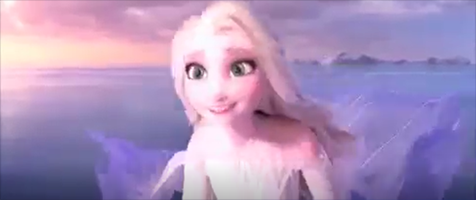


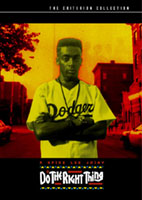 2019:
2019: 